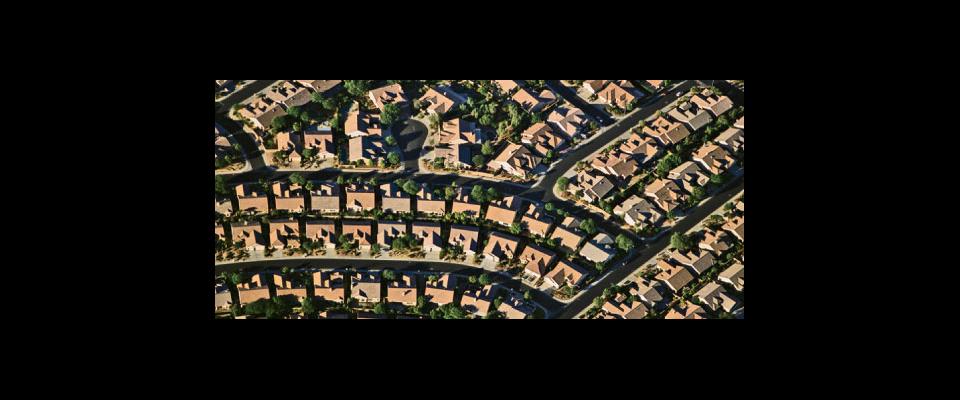George Ban-Weiss is all about being cool: Not only does coolness figuratively define his work as a professional jazz bassist, it almost literally defines his career as a scientist.
His work was pivotal in persuading the city of Los Angeles to require this year that new and renovated residential rooftops be “cool roofs”—reflecting rather than absorbing the sun’s heat. It’s an idea that could someday spread throughout California and other sun-soaked metropolises.
Weiss recently earned a spot in the MIT Review as one of the world’s top innovators under the age of 35—an accolade he achieved after working with the University of California’s Lawrence Berkeley National Lab and the University of Southern California, conducting the first study to map all of the “heat islands“ in an entire city.
Heat islands are areas where rooftops with low-reflectivity absorb vast amounts of solar heat, raising the temperature of buildings and the atmosphere. Cooling down a heat island can be as simple as painting roofs with a lighter color that reflects more solar heat. But locating them is tricky. Researcher normally have to lug a device know as a pryometer onto individual buildings to measure their heat absorption. It’s a time-consuming activity, and impossible for measuring neighborhoods, much less sprawling megalopolis’ like Los Angeles, where Weiss now works as a professor at University of Southern California.
But Weiss found a way. In the course of his research, he stumbled across the National Agriculture Imagery Program (NAIP). Run by the US Department of Agriculture, NAIP uses aerial sensors to gather data on vast swaths of California, including the L.A. metropolis. NAIP’s sensors happened to be calibrated to collect almost exactly the kind of data Weiss was looking for. It was a major coup.
“Those flights are extremely expensive, and there’s no way we could have paid to have them done,” Weiss says. “So we got the raw imagery from them, repurposed it, figured out how to derive what we needed from it, and that was basically the whole project.”
Thanks to Weiss, L.A. roofs are going to get a new paint job. In the spring of 2013, he took his mammoth data set—including aerial visuals of L.A. to highlight how vast swaths of the region are burning up—and presented it to policy makers (including Mayor Antonio Villaraigosa) at a workshop called Climate Resolve. The data had the desired effect: a few months later, L.A.’s City Council passed a law requiring new and renovated roofs for commercial and residential buildings to be of the cool design.
Now the California Air Resources Board, which commissioned the study, wants to implement Weiss’ method across the state.
How did Weiss become a policy-maker for the state of California? If you look at his other interests, it certainly didn’t seem to be destiny. He grew up in two of northern California’s smoggiest cities—Sacramento and Davis—but his initial passion was in flight, not climate science. “I was originally thinking about doing aeronautical engineering,” he says. “I got my pilot’s license while I was in high school, and I had thoughts about maybe becoming a commercial pilot.”
His interest in engineering flourished alongside his other enduring passion—music. Throughout his childhood Weiss took as many music classes as he could fit into his schedule. Partly as a result of his instrument of choice—the standing bass—Weiss found himself in unusually high demand as a freelance musician. In high school he was playing gigs in cafes and rubbing shoulders with high-caliber musicians.
But he felt torn.
“I was trying to figure out what path to follow. I was really interested in the musical path… and I also had an interest in more technical things like engineering,” says Weiss, who shortly before graduation sought his parents’ counsel. “Their advice was why not do both? And that actually had a big impact on me.”
As a UC Berkeley undergraduate, Weiss eventually gravitated toward mechanical engineering. But as a scientist at Lawrence Berkeley Labs he shed his fixation with aviation and started studying combustion emissions and air pollution. Around the same time Weiss joined UC Jazz and started jamming in the Bay Area’s fabled music dens, from Yoshi’s to the Great American Music Hall.
Weiss eschews formal programs, relying on talented musicians for help, and willing to learn on the fly. For example, a couple years ago Weiss was invited by Mads Tolling—one of his band mates at the time, as well as a former member of the Grammy-winning band Turtle Island String Quartet—to record music for several videogames as part of a studio session at George Lucas’ Skywalker Ranch.
Weiss agreed and found out that he would be playing orchestral sounds with several world-class classical musicians. Worried that he wouldn’t be up to snuff, Weiss set out to polish his orchestral skills.
“I needed to go back to those roots to make sure I was really on it with my technique,” Weiss said. “So I got a few lessons from the principal bass player for the San Francisco Symphony.”
While it’s hard to riff on the scientific method, finding unconventional solutions requires a creative mind, especially in a field like climate science where problems are open-ended and practically everywhere you look.
At the moment Weiss is turning his eye to the problem of pavement, which like roofs tend to absorb heat. But pavement covers far more area in a typical city than roofs—typically around 40 percent of an urban area. Plus, research on “cool” pavement is 10 to 20 years behind the work done on roofs. He already has some ideas for how to approach this next frontier—and naturally, he’s approaching it with great cool.
“It’s not as much of a no-brainer as cool roofs, but the cost is similar and you increase the energy efficiency,” he says. “So it’s like, why not?”



















